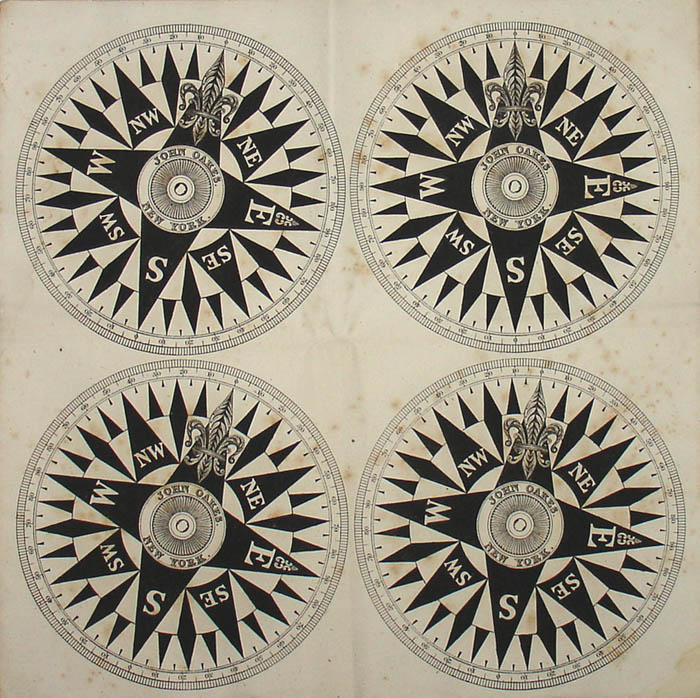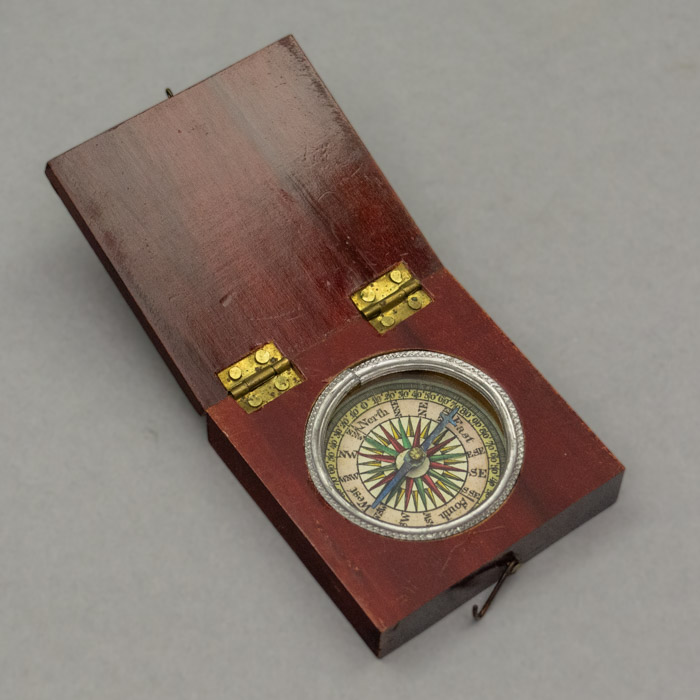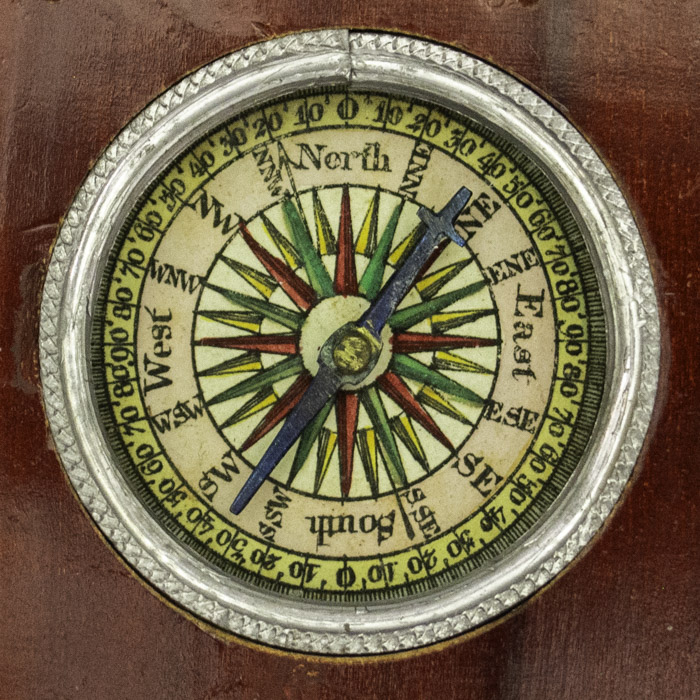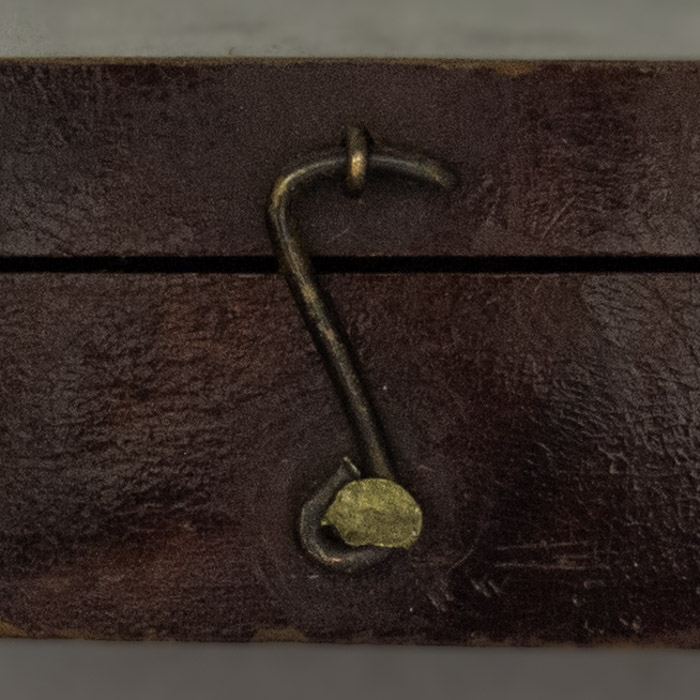Description
John Oakes (1818-1910) was a 19th century New York manufacturer and dealer of navigational equipment, such as compasses and charts. He was born at Bloomfield, New Jersey on November 22, 1818 and died at Glen Ridge, New Jersey on March 5, 1910. Active for over forty years in the mid-to-late-1800s, Oakes’ profession is listed in New York City directories from 1848 to 1896 as “a dealer in charts and a manufacturer of nautical instruments.” One surviving example of a brass Oakes compass is documented by the Virtual Musuem of Surveying alongside an entry for John Oakes in the Compass Maker Directory. It is a compass of polished brass with a magnetized needle and glass bevel, within an overall brass structure with two vertical sighting vanes, indicating its use in land-based surveying rather than maritime navigation. The compass face is engraved directly onto the brass dial, rather than employing a lithographed insert, evidencing to Oakes’ versatile designs and diverse manufacturing methods.
Condition: Generally very good with the usual overall light toning, handling, wear.
References:
“John Oakes.” Compass Maker Directory. Virtual Museum of Surveying. http://www.surveyhistory.org/john_oakes.htm (Accessed June 2, 2025).














